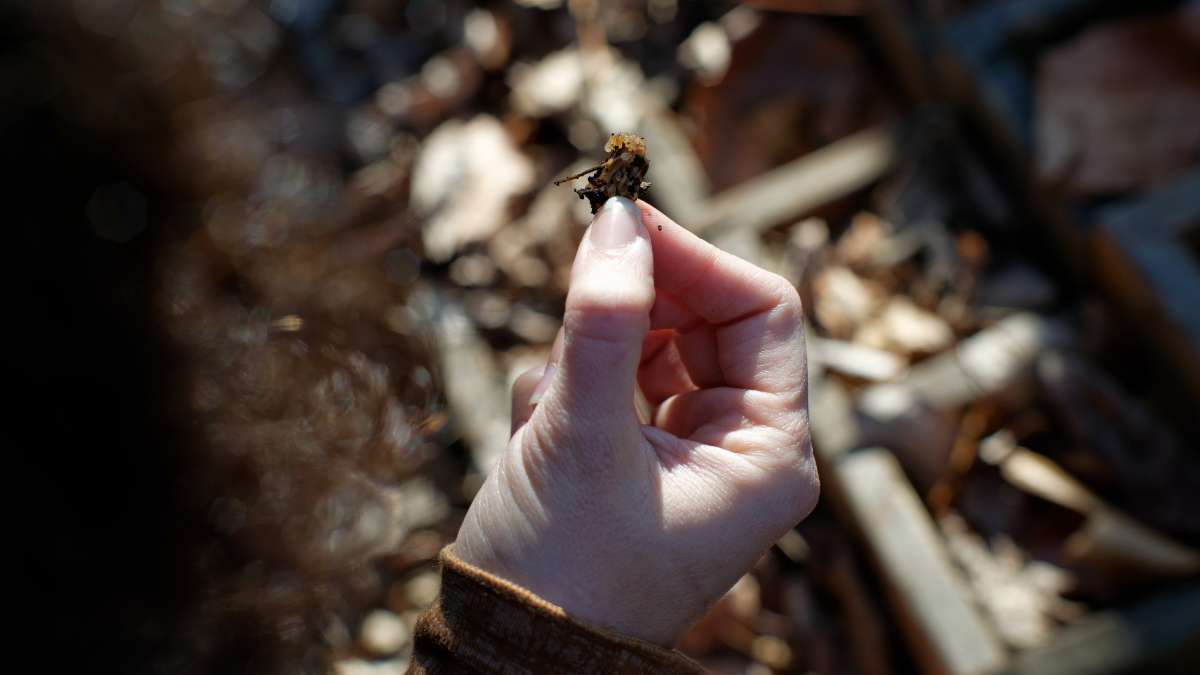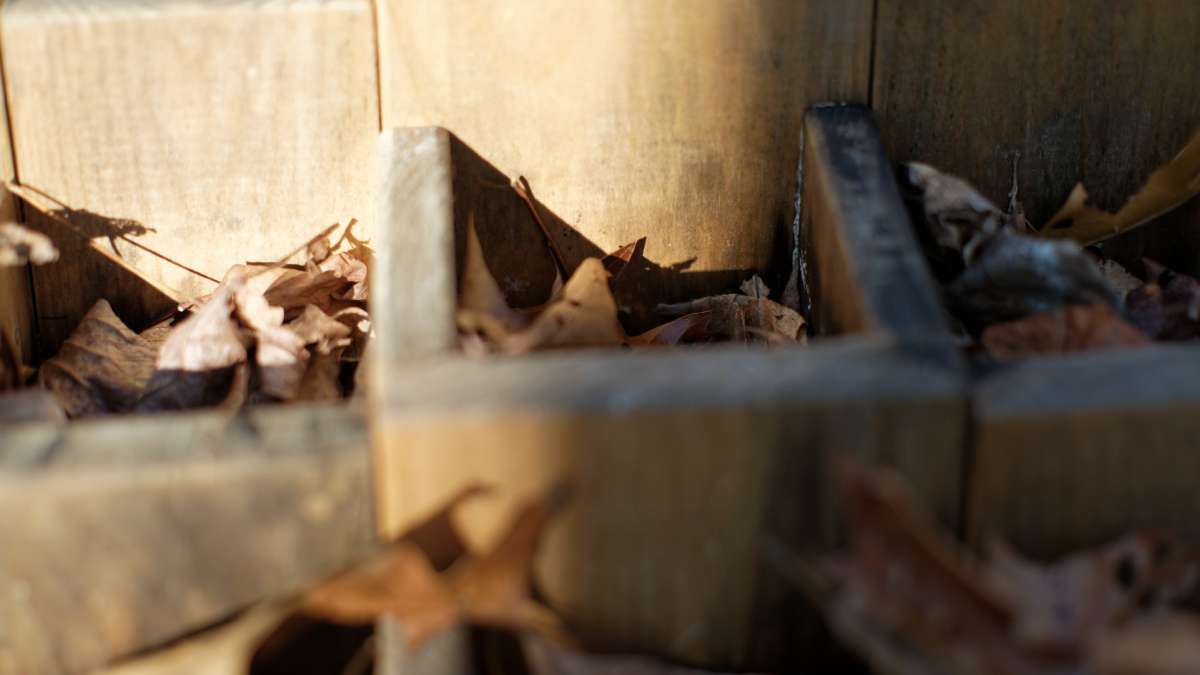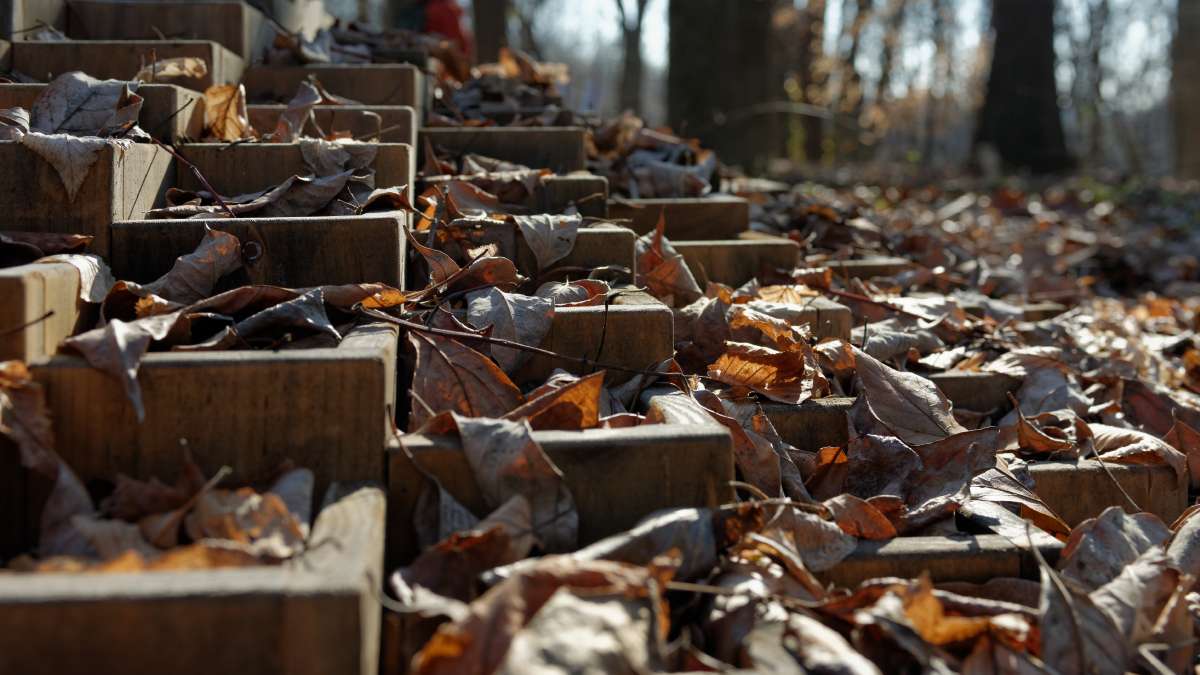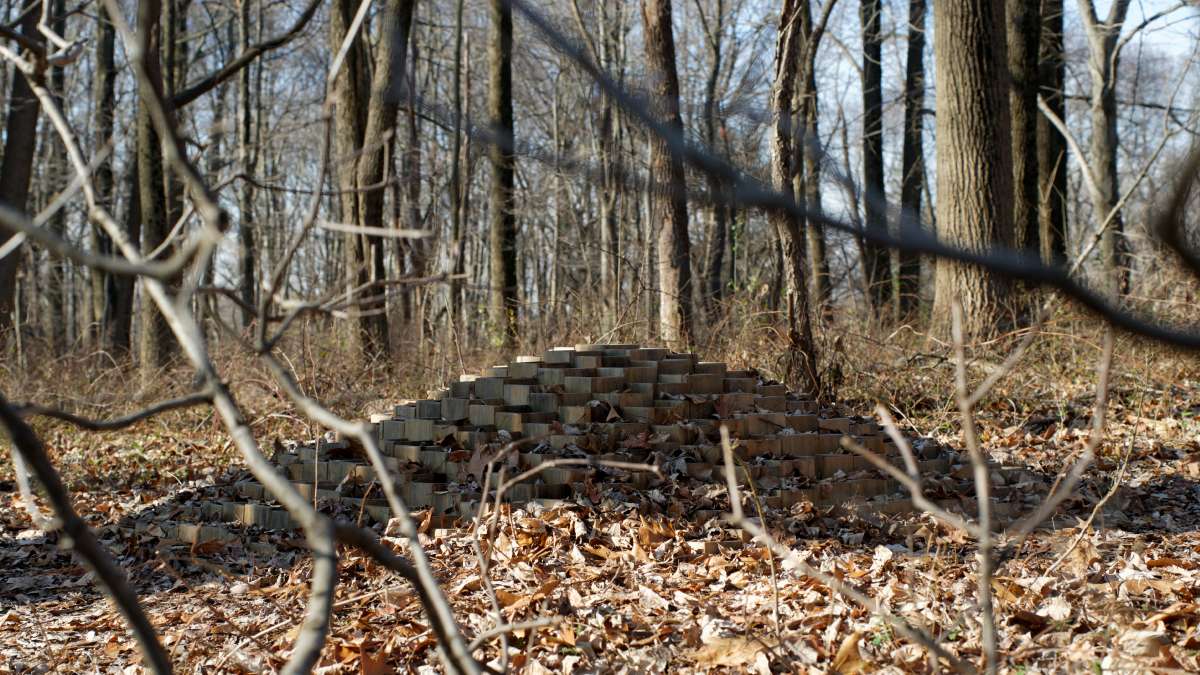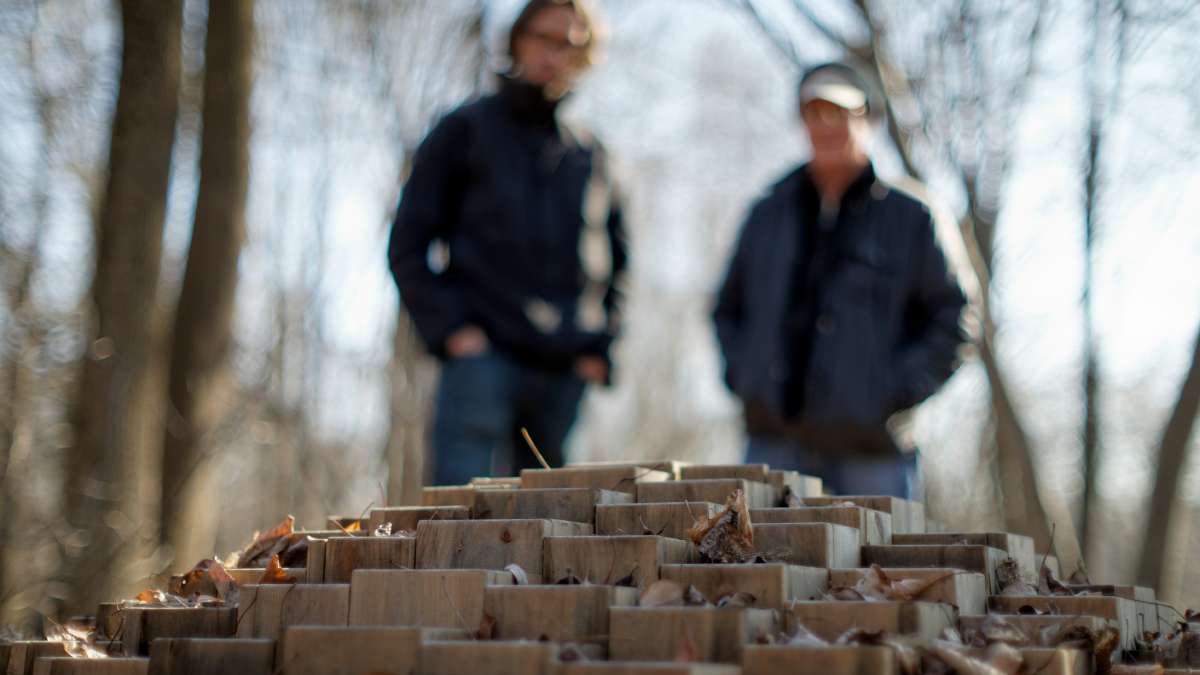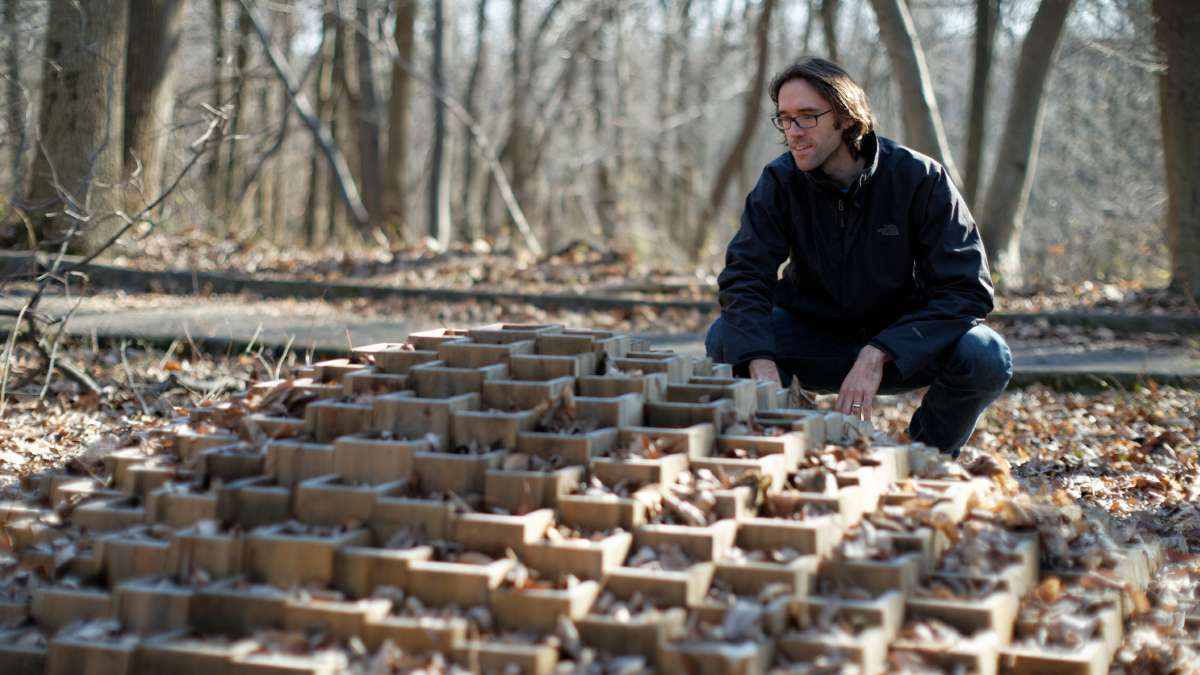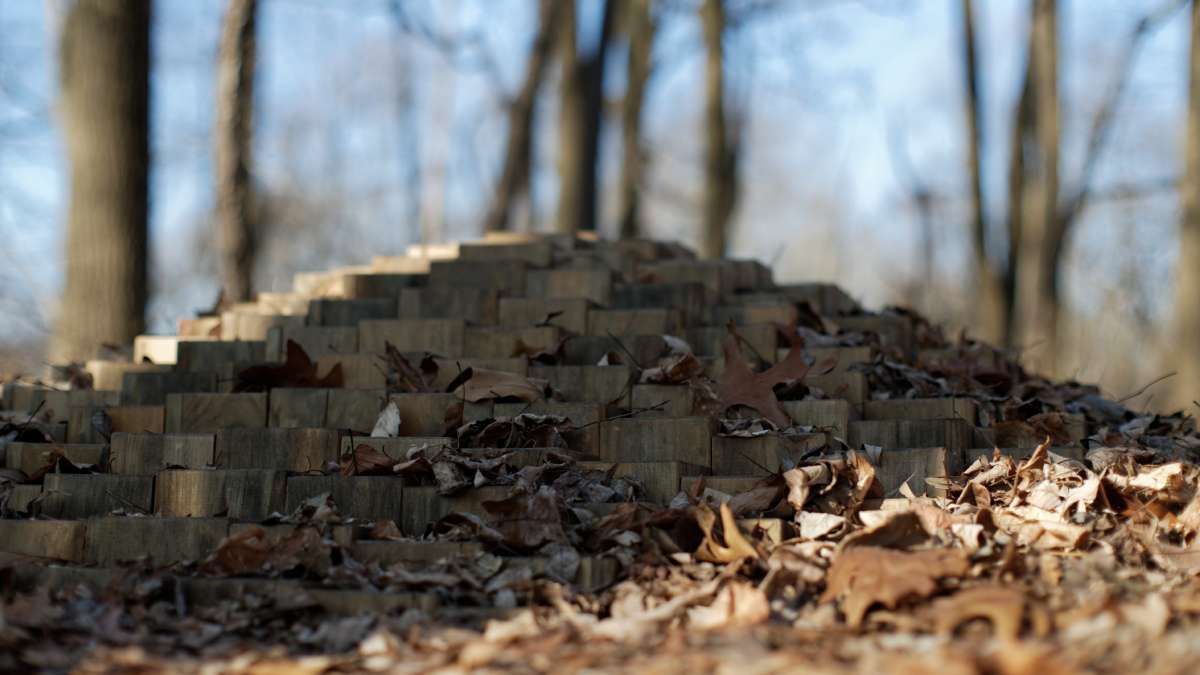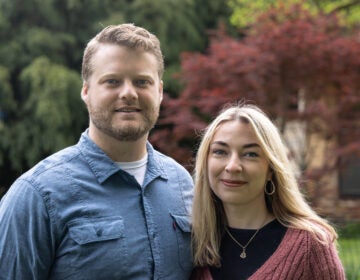Art designed to gradually decay into the landscape
ListenMany artists spend a lifetime trying to build a legacy. But a recent installation by local artist and professor Jake Beckman was built for just the opposite reason — to disappear slowly over time.
It doesn’t take long to run into Future Non-Object Number One when you’re walking through the woods at the Schuylkill Center for Environmental Education in Roxborough. The wooden art installation on the edge of Philadelphia will degrade into the ground over the next 10 years or so.
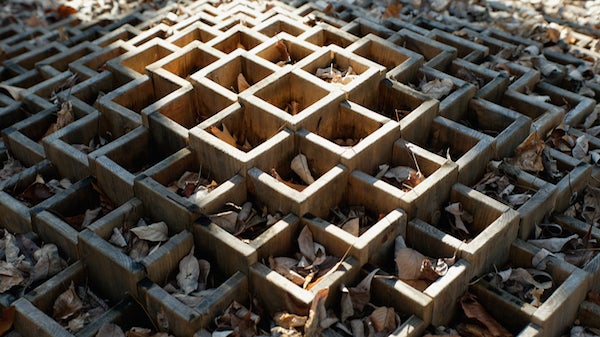
Future Non-Object Number One can be found after a five-minute walk through the woods at the Schuylkill Center for Environmental Education. (Bastiaan Slabbers/for NewsWorks)
The land was once used for farming, and the structure was built to fortify the soil with the local woodland fungi it was stripped of many years ago, said Beckman.
“Part of the idea was bringing, forging, finding, examples of fungus from other parts of the property and kind of bringing them and reintroducing them to this part of the property,” said Beckman.
The piece is a short pyramid of small craters. Each crater has been filled with wood chips that have been inoculated with the fungus. The area has already changed since its installation in April said the Schuylkill Center’s director of environmental art, Christina Catanese.
“You can see the seasonal changes in the vegetation that’s surrounding it and the change in the sculpture itself, but then it presents almost infinite opportunities to look closely and see what’s happening on the tiniest scale,” she said. “I think it presents an opportunity to practice close observation in a way that we don’t often do.”
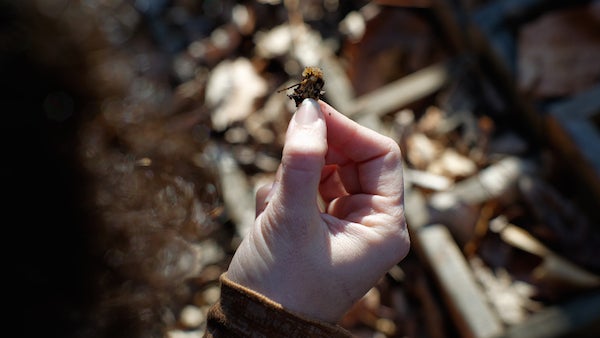
Inspecting a growth found in the structure. (Bastiaan Slabbers/for NewsWorks)
Beckman, who comes by the site about once a month to check on it, said the sculpture is already fitting in with its surroundings a bit more. When it was first installed, the fresh pine wood stood out in the landscape.
“It was pretty glaring,” he said. “As time has progressed, it has weathered and started to blend in a little bit more.”
The piece is made entirely of wood and is joined together with small pieces of wood called biscuits — no nails or screws. It’s a first for Beckman, who has never worked on a degradable structure before. To make it fully degradable, nothing made from metal or plastic was used.
“So much of my work has been about making things that are archival, that will last and stand the test of time,” he said. “I think there was something really nice about not having to feel like I was fighting against time, but really working with time.”
WHYY is your source for fact-based, in-depth journalism and information. As a nonprofit organization, we rely on financial support from readers like you. Please give today.



